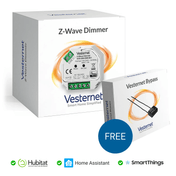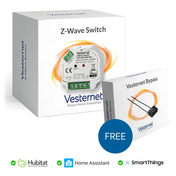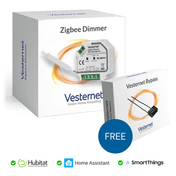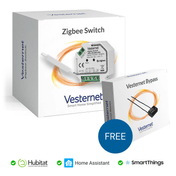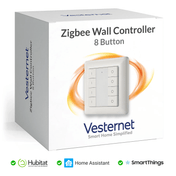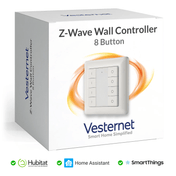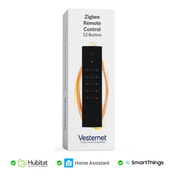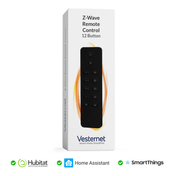Z-Wave, Zigbee & WiFi Modules are probably the most flexible devices available for your Smart Home as they can be used to control pretty much anything you can think of - lighting, power, pumps, blinds, awnings, heating, cooling, gates... the list is endless. Combine them with other Smart Home devices like sensors and you can have full control of your home.
Manufacturers of Z-Wave, Zigbee & WiFI Modules have different types available designed to do specific roles, this gives you the best product for the job, but can make choosing the right Module a little more difficult. You also have the choice between manufacturers to contend with, where some will offer more advanced capabilities and others will offer simpler functionality, often at a cheaper price. Remember that you can mix and match manufacturers on the same system as they are all compatible - more information can be found in our Understanding Compatibility guide.
Additionally, there are two broad Module styles - Standalone and DIN mounted (or mountable via an adapter). Standalone Modules can be used anywhere, including in light switch and socket pattresses (back-boxes), whereas DIN mounted Modules are designed to be mounted on a DIN rail in a suitable enclosure or consumer unit.
This guide explains the purpose of different Modules, what they are used for and gives extra details to help select between the manufacturers.
Standalone Modules and Types
Firstly, almost all Modules are what we term "actuators" - meaning that they physically control an electrical appliance, circuit or light. To do this they control the power to those circuits, so they do need to be wired into the circuits to be controlled. More information is available in our Getting Started guide, and to help you with the wiring, we have numerous wiring guides available in our Wiring Guides section.
Dimmers - Z-Wave | Zigbee | WiFi
Dimmer Modules, as the name implies, enable you to control the brightness of a light. They are wired into the mains lighting circuit and control the voltage going to the lights on that circuit. The new range of Dimmers all now feature "trailing-edge" Dimmer electronics which are designed to work well with dimmable LED bulbs. Of course, they will also work great with halogen bulbs and old style incandescent bulbs.
Dimmer Modules - things to think about:
- Neutral - Can the Dimmer work without Neutral? This is important if you plan to install the Module in the light switch as most lighting circuits do not have Neutral available at the light switch (termed a 2-wire circuit).
- Trailing-Edge - The latest Dimmers feature "trailing-edge" control, which means they work well with dimmable LEDs. Older "leading-edge" Dimmers will not work very well with dimmable LEDs.
- Physical Installation - Dimmer Modules are small and in fact are getting smaller all the time, but they still need a reasonably deep pattress (back-box) for installation to allow room for heat dissipation and wiring to enter and exit safely. Check our our guide on physical installation of a Module for further information.
- Information - More information about these issues and other things to consider is available in our Inline Lighting guide.
Relays / Switches - Z-Wave | Zigbee | WiFi
Relays are physical switches, they include a set of switch contacts that physically open and close allowing you to control the power supplied to the connected load. Relays are incredibly versatile, they can be used anywhere that you wish to turn an appliance or load on and off - lights, power circuits, pumps, gates, etc.
Relays are also useful for lighting circuits where you wish to control lights that are not suitable for control from a Dimmer such as fluorescent and high power outside lights. However, do note that all Relays need Neutral.
Relay Modules - things to think about:
- Neutral - All Relay Modules need Neutral. Check that you have Neutral available.
- Single / Double - Most Relay Modules are available in single or double versions. The Single controls one circuit, the Double will control two separate circuits.
- Dry Contacts - Most Relays have the supply voltage as the output from the contacts. However, some offer "dry contact" versions - this means the contacts do not have a voltage (sometimes referred to as "volt-free") on them allowing them to be used as pure switches in such things as alarms, or perhaps for controlling a low voltage DC circuit.
- Physical Installation - Relay Modules are small and in fact are getting smaller all the time, but they still need a reasonably deep pattress (back-box) for installation to allow room for heat dissipation and wiring to enter and exit safely. Check our our guide on physical installation of a Module for further information.
- Information - More information about these issues and other things to consider is available in our Appliance Control & Power Monitoring guide.
Blinds, Curtains & Shutters - Z-Wave | Zigbee | WiFi
Motor Modules are similar to Relays as they have switch contacts, but have been designed specifically to control motors in things like blinds, curtains and shutters. They allow the Module to be calibrated so that it knows the position of the motor, or rather, what it is controlling - so it can know if a blind is open, closed, 50% open etc, allowing you to have it open or close to preset positions.
Blind / Curtain / Shutter Modules - things to think about:
- AC Motors - Most Motor Modules are designed to control AC mains (230V AC) motors.
- Neutral - Like Relays, AC Motor Modules also need Neutral. Check that you have Neutral available.
- DC Motors - Motors using a DC supply often use a different method to reverse the motor's direction, called "Polarity Reversal" and these need a special Motor Module that is specifically designed for this type of cointrol.
- Physical Installation - While Motor Modules are small and in fact are getting smaller all the time, they still need a reasonably deep pattress (back-box) for installation to allow room for heat dissipation and wiring to enter and exit safely. Check our our guide on physical installation of a Module for further information.
- Information - More information about these issues and other things to consider is available in our Climate & Comfort guide.
RGB / RGBW Dimmers - Z-Wave | Zigbee | WiFi
These are special Modules that allow you to control the brightness and colour of LED strips. The Modules can control either three (RGB) or four (RGBW) channels, allowing them to control the LED strip's different colour channels (Red, Green, Blue for RGB and Red, Green, Blue and White for RGBW). They can also be used to drive separate channels of single colour LED strips, or even low voltage DC LED / Halogen Bulbs.
RGB / RGBW Modules - things to think about:
- DC only - Do not confuse these with normal AC mains Dimmers (shown above). RGB / RGBW Dimmers must be installed in the low-voltage (DC) circuit supplying the LED strips (or low voltage DC Bulbs). You use the DC power supply that comes with your LED strips (or low voltage DC Bulbs) to supply power to the Module, which in turn powers the LED strips (or low voltage DC Bulbs).
- Physical Installation - While these are technically Modules, due to the fact that they need to be powered by a DC power supply they are not typically installed in the same way as a normal Module would be (for example behind an existing light switch). This should be considered when planning your installation, because you will also need to install the AC to DC Power Supply somewhere!
Thermostats - Z-Wave | Zigbee | WiFi
Thermostat Modules are similar to Relays as they have switch contacts to control a load - in this case heating of some sort, whether it be a direct electrical wall heater, UFH electrical mat heating or even as a trigger input into a convential water based boiler heating system.
Thermostat Modules - things to think about:
- Neutral - All Z-Wave Thermostats Modules need Neutral. Check that you have Neutral available.
- Control Method - Different control methods are available, for example PID, PWM, Hysterisis, etc - make sure to choose a product that will work with your heating sytem!
- Physical Installation - Thermostat Modules are small and in fact are getting smaller all the time, but they still need a reasonably deep pattress (back-box) for installation to allow room for heat dissipation and wiring to enter and exit safely. Check our our guide on physical installation of a Module for further information.
- Information - More information about these issues and other things to consider is available in our Heating guide.
DIN Mounted Modules
DIN mounted Modules have the same functions as the standalone Modules, but are designed to be mounted on a DIN rail. This allows a number of Modules to be installed together in a single enclosure, making the overall installation tidier and easier to maintain.
There are generatlly two DIN mounted Module solutions available - complete DIN Modules ready to fit and a selection of DIN "adapters" that have been designed specifically to house standard Modules allowing them to be fitted to a DIN rail.
DIN Modules - Z-Wave | Zigbee | WiFi
DIN Modules are ready to fit to a DIN rail and are available in various types including Dimmers and Switches.
DIN Adapters - euFIX for Fibaro | HELTUN
DIN adapters are designed specifically for a particular manufacturers Modules, allowing them to fit into DIN rail enclosures. At this time we're only aware of two manufacturers that make these - Eutonomy, with their euFIX range for Fibaro Z-Wave Modules and HELTUN, who make a single DIN adapter that supports their own High Load Switch and Relay Switch
There are a variety of euFIX DIN adapters available to support Fibaro Z-Wave Modules. Each DIN adapter is available with and without push-buttons - the push-buttons make it simple to Include the Module in the Z-Wave network and to test the Module outputs.
Importantly, the euFIX adapters make ALL of the Fibaro Module's connections accessible - so you keep all the Module's features and functionality, just wrapped up in a DIN housing.
For more information about the euFIX adapters take a look at our blog article - Eutonomy euFIX Fibaro DIN Adapters.
Getting Help and Advice
Hopefully this guide has helped clarify what options are available, what the different Z-Wave, Zigbee & WiFi Modules do, and shown the comparison between manufacturers. If you need any further help or advice, contact Vesternet and we will do our best to answer all your questions.










